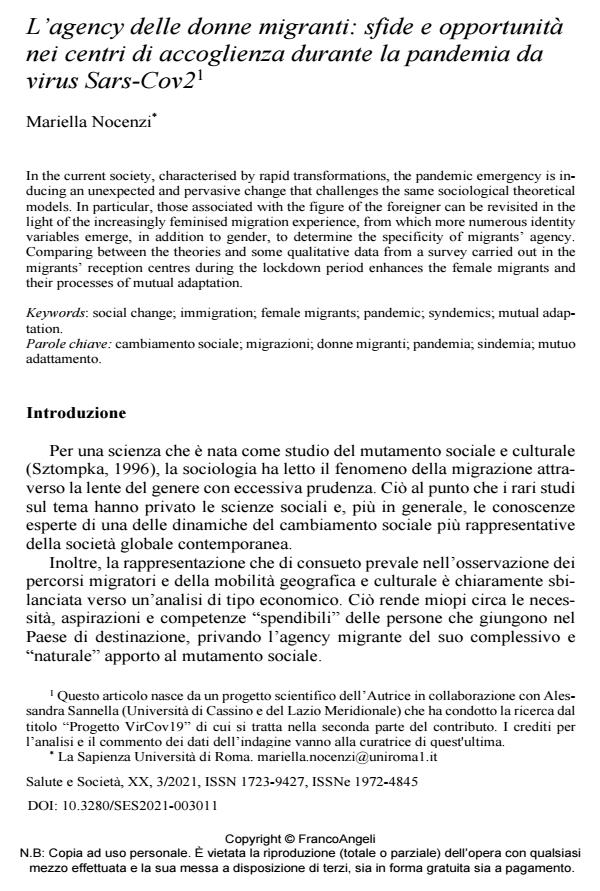L’agency delle donne migranti: sfide e opportunità nei centri di accoglienza durante la pandemia da virus Sars-Cov2
Journal title SALUTE E SOCIETÀ
Author/s Mariella Nocenzi
Publishing Year 2021 Issue 2021/3
Language Italian Pages 16 P. 175-190 File size 231 KB
DOI 10.3280/SES2021-003011
DOI is like a bar code for intellectual property: to have more infomation
click here
Below, you can see the article first page
If you want to buy this article in PDF format, you can do it, following the instructions to buy download credits

FrancoAngeli is member of Publishers International Linking Association, Inc (PILA), a not-for-profit association which run the CrossRef service enabling links to and from online scholarly content.
In the current society, characterised by rapid transformations, the pandemic emergency is in-ducing an unexpected and pervasive change that challenges the same sociological theoretical models. In particular, those associated with the figure of the foreigner can be revisited in the light of the increasingly feminised migration experience, from which more numerous identity variables emerge, in addition to gender, to determine the specificity of migrants’ agency. Com-paring between the theories and some qualitative data from a survey carried out in the mi-grants’ reception centres during the lockdown period enhances the female migrants and their processes of mutual adaptation.
Keywords: social change; immigration; female migrants; pandemic; syndemics; mutual adaptation.
Mariella Nocenzi, L’agency delle donne migranti: sfide e opportunità nei centri di accoglienza durante la pandemia da virus Sars-Cov2 in "SALUTE E SOCIETÀ" 3/2021, pp 175-190, DOI: 10.3280/SES2021-003011